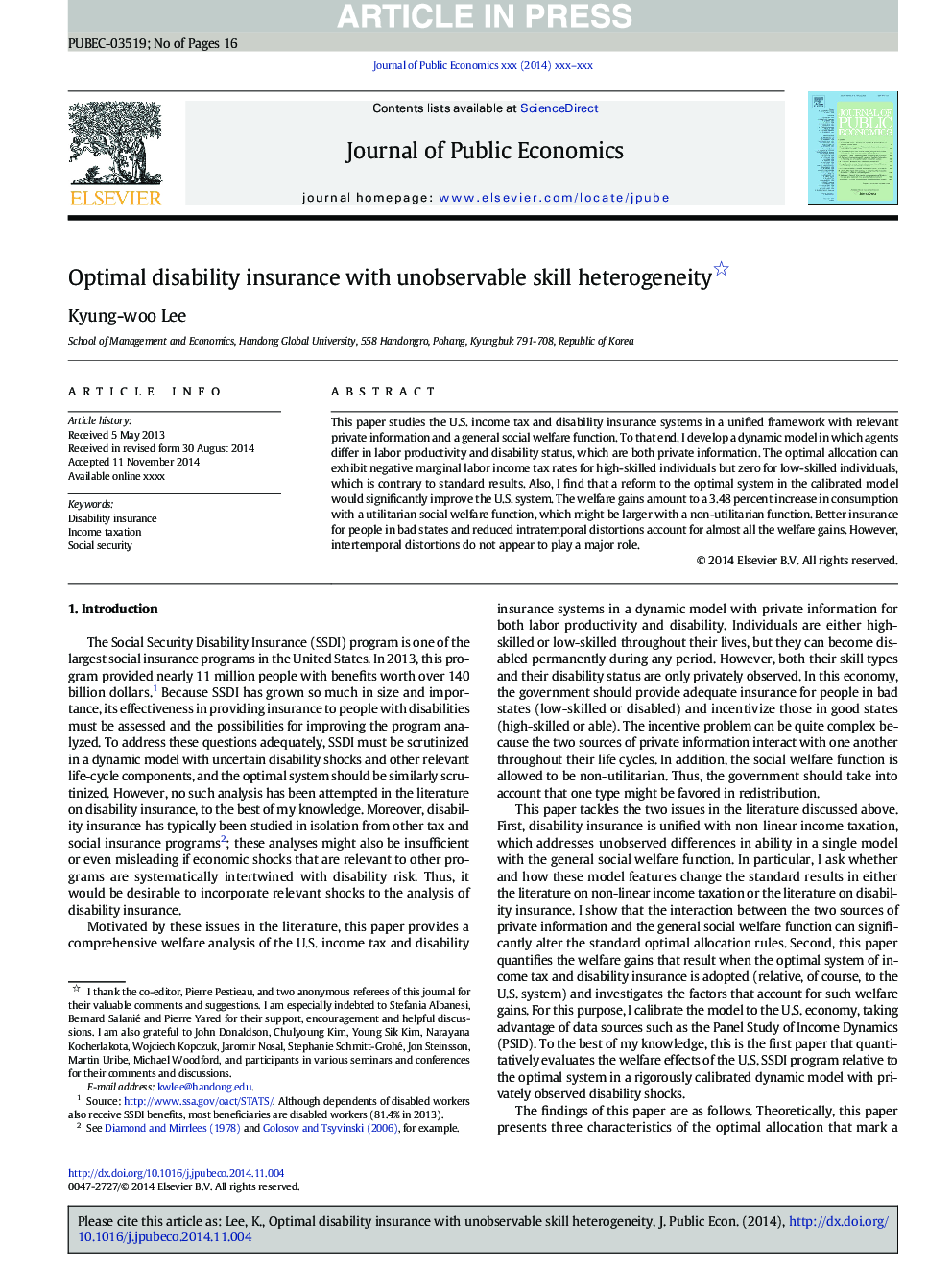| Article ID | Journal | Published Year | Pages | File Type |
|---|---|---|---|---|
| 7370084 | Journal of Public Economics | 2015 | 16 Pages |
Abstract
This paper studies the U.S. income tax and disability insurance systems in a unified framework with relevant private information and a general social welfare function. To that end, I develop a dynamic model in which agents differ in labor productivity and disability status, which are both private information. The optimal allocation can exhibit negative marginal labor income tax rates for high-skilled individuals but zero for low-skilled individuals, which is contrary to standard results. Also, I find that a reform to the optimal system in the calibrated model would significantly improve the U.S. system. The welfare gains amount to a 3.48 percent increase in consumption with a utilitarian social welfare function, which might be larger with a non-utilitarian function. Better insurance for people in bad states and reduced intratemporal distortions account for almost all the welfare gains. However, intertemporal distortions do not appear to play a major role.
Related Topics
Social Sciences and Humanities
Economics, Econometrics and Finance
Economics and Econometrics
Authors
Kyung-woo Lee,
